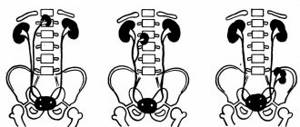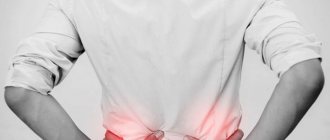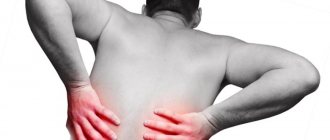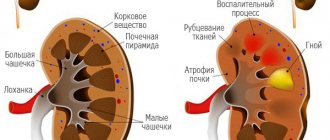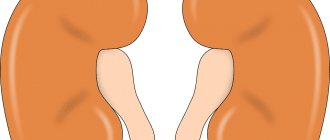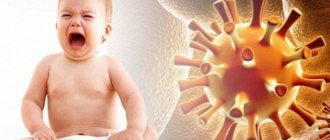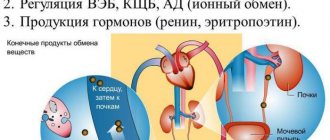Home/Health/Headaches and kidney health – is there a connection?
Headaches are constant, they cause pain and do not go away for a long time. Usually the symptom is explained by weather conditions and changing seasons. Having taken a remedy for headaches, people calm down, because the unpleasant sensations go away. The action of analgesics allows you to immediately feel lightness. If they are frequent, they speak of meteosensitivity. This is a kind of reaction to the weather and environmental conditions. Often fears turn out to be justified. in this case, measures must also be taken.
Having measured the pressure, they often find out that it is very high. Then the fight to demote him begins. In American medicine there is a strange desire to eliminate not the disease, but the symptom. The doctor prescribes certain medications to stop the manifestation. The likelihood of a medical error decreases, because the prescriptions are usually the same, regardless of which doctor you visit. The reasons are not identified, the disease continues to develop.
Often other signals go unheeded. People don’t see if there is swelling or if the lower back hurts. If the pain does not go away, along with high blood pressure, they warn of glomerulonephritis and urolithiasis.
Glomerulonephritis can develop in a chronic, sluggish form. time - 10-15 years. The patient's glomeruli in the kidneys become inflamed, and gradually they are replaced by connective tissue; the organ can no longer perform its functions normally.
A disease like kidney stones develops sluggishly. The process is inconspicuous, but it has a lot of negative consequences. The easiest way to identify the cause is to consult a specialist. It is recommended to conduct a biochemical blood test; it is done in any diagnostic institution.
Mechanisms of headache in kidney disease
Although it would seem that there is no direct connection between kidney diseases and the occurrence of headaches, nevertheless, in such patients it appears due to a number of pathological factors and processes. Among the main reasons for its occurrence are the following:
- Increased blood pressure . The main reason for it in renal pathologies is a violation of the synthesis of a number of biologically active substances. This leads to the development of persistent hypertension, which, in turn, is manifested by frequent headaches.
- Intoxication of the body . The kidneys play a very important role in neutralizing and removing nitrogenous metabolic products, so disorders in their work can lead to poisoning of the body with these toxic substances. Such intoxication is accompanied by the occurrence of a number of symptoms and manifestations, including headache.
- Disorders of hematopoietic processes . The kidneys are actively involved in the formation of red blood cells through the synthesis of the hormone erythropoietin . Their diseases can lead to impaired hematopoiesis with the development of severe anemia. This is accompanied by frequent pain in the head, varying in location and intensity.
- Metabolic disorders . The role of the kidneys in the regulation of water-salt, carbohydrate, protein and lipid metabolism is very large. Pathological changes in this paired organ have a very negative impact on the state of metabolic processes in the body, which, among other things, can lead to pain in the head.
Through such mechanisms, the occurrence of pain in the head can be observed in a variety of renal pathologies, such as acute or chronic pyelonephritis, glomerulonephritis, urolithiasis, nephroptosis, nephrocalcinosis, various forms of nephrosis and nephropathies, etc.
Why do your kidneys hurt?
Kidney diseases
Most often, the causes of kidney disease are diseases of the organ itself or nearby tissues.
Pain occurs as a result of the development of pyelonephritis, which is a bacterial infection. In the process of infection, unpleasant pulling sensations arise. In this case, the pain can be localized both in the kidney area on the right or left side, and in the lower back. To diagnose the disease, it is enough to take a urine test and undergo an ultrasound examination (ultrasound). Nephrolithiasis also causes pain in the kidneys. In this case, the disease may be asymptomatic for some time, and unpleasant sensations may appear only during periods of severe stress and excessive physical exertion. Nephrolithiasis is caused by stones formed in the organ.
Other common diseases include glomerulonephritis (inflammation resulting from the body's autoimmune reaction), renal failure (impaired kidney function), cancer, nephroptosis and hydronephrosis. All these diseases can only be diagnosed by a specialist after conducting appropriate tests. These conditions require immediate treatment.
Distinctive features of headaches of renal origin
Pain in the head with kidney disease can vary in nature and intensity. Most often, it is moderate, without clear localization, long-lasting, and can occur periodically or be constant.
An important feature of headaches of renal origin is that they are accompanied by a number of other symptoms characteristic of kidney disease. These symptoms are:
- Swelling, most often on the face and legs.
- The presence of abnormalities in laboratory tests of urine and blood.
- Urinary disorders, dysuric phenomena.
- Pain in the lumbar region not associated with physical activity.
- Increased blood pressure, especially diastolic.
Causes of chronic disease
The development of a chronic form can be provoked by the following conditions:
- Chronic glomerulonephritis.
- Stones in the kidneys.
- Obstruction of the ureters.
- Renal polycystic disease.
- Long-term use of certain groups of medications.
- Lupus, diabetes.
- Chronic pyelonephritis.
It is worth noting that the chronic course of pyelonephritis and glomerulonephritis most often causes acute renal failure.
You can reduce the risk of kidney disease by following certain rules. First of all, this concerns diet. If a person is thirsty, you should not drink coffee, alcoholic or carbonated drinks - they put a lot of stress on this organ. It is better to replace them with plain water. It is recommended to avoid red meat and dairy products.
What examinations are necessary for headaches in patients with renal diseases
Most often, headaches due to renal pathologies are detected against the background of an already diagnosed acute or chronic disease. If the cause of the headaches has not yet been precisely established, then the presence of the symptoms mentioned above gives serious reason to suspect that the patient has kidney problems.
In any case, if such a symptom complex is present, the following examinations are necessary:
In some cases, if certain ambiguities or questions arise, there may be a need for additional examinations: radiography of the kidneys or computed tomography, electroencephalography, examination by an endocrinologist, cardiologist, etc.
Therapy for chronic forms of the disease
Treatment of chronic renal failure is aimed at slowing the progression of the underlying disease. The main task of doctors is to detect the disease at an early stage and prevent changes in kidney function.
To treat the chronic form, hemodialysis and peritoneal dialysis are used. They are performed in a medical facility, but do not require hospitalization; after the procedure, the patient can go home.
The patient can perform peritoneal dialysis independently. It is enough to visit the doctor once a month. This procedure is used for treatment while the patient is awaiting a kidney transplant, since this disease triggers irreversible processes, and this is the only way to maintain the patient's condition.
Transplantation is the replacement of a damaged kidney with a donor organ. It can be either a relative or a recently deceased person. At the beginning, many compatibility tests are carried out. After the operation, the kidney takes root within a year. One healthy kidney replaces the work of two sick ones. If the donor is a relative, then the chances of a favorable outcome increase.
After a kidney transplant has been performed, the patient is prescribed immunosuppressants, which will need to be taken for the rest of his life. There is one negative point: while taking these drugs, a person’s immunity is noticeably reduced, and he can easily become infected with any infectious disease.
Specific pain in the lumbar region in men and women
Quite often, discomfort in the lower back is not related to either the kidneys or back pathologies. In men, pain can occur due to infection in the genitourinary system, which provokes inflammation. Prostatitis can also cause discomfort in the back.
Lifting weights, physical activity and playing sports can also cause pain in the lumbar region in men. Usually, after resting or rubbing the area that is most disturbing with warming or pain-relieving ointments, the discomfort disappears.
In women, back pain is often associated with menstruation. This is usually a sign of the premenstrual cycle. If we talk about female diseases that can cause back pain, then this is inflammation in the ovaries. Unpleasant sensations in the back from pathology occur in the middle of the lower back or closer to the sacrum, without affecting the kidney area. More often than not, the pain is nagging in nature and is accompanied by pain in the groin or lower abdomen.
Shooting in the lower back can manifest itself as negative disturbances in the functioning of the bladder (cystitis) and bile ducts. Such ailments, in addition to back pain, cause women to have frequent urges to go to the toilet and difficult and painful urination.
Only a specialist can determine exactly what really hurts after an examination. Therefore, you need to seek medical help if you experience suspicious symptoms in your back.
Diet as a method of treatment
Whatever methods of treatment for kidney failure are used, it is necessary to adhere to a special diet. Here are a few rules for its observance:
- It is recommended to eat more vegetables and fruits.
- Animal fat should be excluded from the diet.
- Reduce the amount of salt, spices, smoked meats, and canned food.
- If potassium levels are elevated, foods containing it should be avoided. Among them are banana, nuts, cocoa, vegetable and meat broths, chocolate, dried fruits.
- In case of uremia, it is necessary to remove legumes, fish, offal, goose, veal, muesli, and alcohol from the diet.
- For cooking, it is best to use food foil, avoid frying and baking.
- It is advisable to switch to dietary foods.
- Reduce your intake of protein foods. Eat healthy protein - eggs, milk.
If chronic renal failure develops, treatment with folk remedies can be a good addition to drug therapy. It should be noted that the use of these drugs will be more effective at an early stage of the disease.
Treatment involves not only taking medications, but also changing your daily routine. Among the medications, doctors prescribe antibiotics, diuretics, and other drugs that help maintain kidney function. The doctor determines the permissible norm of physical activity for the patient, depending on the condition of the body. In addition, treatment requires following a diet in which the amount of salt is minimized and fluid intake is increased.
Alternative treatment for kidney failure
It is very good if you use the proposed recipes while adhering to a diet. Here are some of them:
- You need to take one part of dill seeds and chop them, add 20 parts of water. Take half a glass 4 times a day. Dill perfectly relieves inflammatory processes and has a diuretic effect.
- Seaweed improves metabolic processes. Can be added to dishes in the amount of 100 grams daily. Helps remove toxins from the body.
- Juniper is prepared according to this scheme. Brew one spoon with a glass of boiling water and leave for an hour. Strain and take 1 tablespoon 4 times a day.
- Horsetail has a diuretic, bactericidal, and astringent effect. Helps restore water and electrolyte balance. You need to pour 3 tablespoons of horsetail into 0.5 liters of water and boil for 30 minutes, then strain and drink in 3-4 doses per day.
If you have chronic kidney failure, herbal treatment can help reduce the progression of the disease. For example, it is recommended to use the following infusion:
- You need to take 30 grams of blackthorn flowers, tricolor violet, St. John's wort, elderberry, 50 grams of dandelion and 80 grams of chamomile. Take one tablespoon of the resulting mixture, pour 1 cup of boiling water and cook for 3 minutes. After the decoction has infused for 10 minutes, strain and drink three times a day before meals. It is a good antipyretic, diuretic and antiseptic.
- Burdock root improves the patient's condition. The infusion is prepared as follows: pour boiling water over the chopped root and leave overnight. You need to drink the infusion in small portions throughout the day. The drinking regime must be observed.
If there is kidney failure, treatment with folk remedies will help strengthen the immune system and give strength to fight the disease. For example, echinacea tincture will increase the body's resistance to infections.
You can mix walnuts and honey in equal proportions and leave in a dark place for 30 days. You need to eat 3 teaspoons per day in three doses. This product cleanses the blood well and strengthens the immune system.
It is very important to keep your symptoms under control if you have kidney failure. Treatment with folk remedies can reduce their manifestation, so it must be agreed upon with the attending physician.
Main symptoms
The nature of pain and nausea in chronic pyelonephritis
Chronic pyelonephritis is defined by mild or absent symptoms. Basically, the acute form of the inflammatory process is a provoking factor in the development of the chronic form. The main symptoms are as follows:
In acute periods, it may be accompanied by involuntary release of urine and pain during urination. Symptoms of internal poisoning of the body (chills, headaches and fever) are not typical. Lower back pain is more severe in damp and cold weather. The clinical picture of the disease looks like a wave. Periods of remission are characterized by normal indicators in urine analysis. Detection of chronic pyelonephritis often occurs randomly during studies of urinary fluid.
Pain and nausea in acute pyelonephritis
Frequent symptoms of acute pyelonephritis are:
Sharp pain in the lumbar region is the most common companion of acute pyelonephritis.
- rapid increase in the temperature of the human body (up to 39-40 degrees);
- general weakness in the body;
- refusal to eat or decreased desire to eat;
- attacks of nausea and vomiting;
- pain in the lumbar area;
- frequent urge to urinate (typical of complicated inflammation);
- moderate swelling;
- heart rhythm disturbances;
- feeling of chills in the body;
- backache;
- headache (with pyelonephritis is also a common symptom).
Low back pain is the most common symptom of acute pyelonephritis. The pain can be dull or aching in nature with varying intensity. In some cases, severe abdominal pain may be felt and this can make it difficult to diagnose the disease. Pain similar to renal colic occurs with pyelonephritis against the background of nephrolithiasis. With a bilateral inflammatory process in the kidneys, symmetry in the manifestation of symptoms is not observed.
Treatment methods for pyelonephritis
Surgical treatment of chronic pyelonephritis
In acute pyelonephritis, kidney decapsulation, nephrostomy, and drainage of the perinephric space are performed. In chronic pyelonephritis, surgical intervention aims to restore urodynamics (for prostate adenoma, urolithiasis, etc.).
Sanatorium-resort treatment of chronic pyelonephritis
- Pain with pyelonephritis
Sanatorium-resort treatment is indicated for chronic pyelonephritis without exacerbation and in the absence of renal failure in Truskavets, Essentuki, Zheleznovodsk.
Hemodialysis for the treatment of chronic pyelonephritis
Hemodialysis is indicated for the development of renal failure.
Why does pain radiate to the leg?
Constant aching pain syndrome is an indicator of nephroptosis (prolapse) of the kidney of varying degrees
You should understand in as much detail as possible the reasons why kidney pain can radiate to your legs:
- Dull pain on the left or right side of the lower back, radiating to the leg, can be caused by a chronic pathology of an infectious nature, tumor growth and the presence of a neoplasm.
- Constant aching pain syndrome is an indicator of nephroptosis (prolapse) of the kidney of varying degrees. Sometimes fever and frequent painful urination are added, which indicates pyelonephritis. The legs hurt mainly at night, restless legs syndrome occurs, accompanied by convulsions.
- If the pain is aching, spreads not only in the lumbar region, but also in the groin, leg, and radiates to the stomach - this may indicate hydronephrosis. Disturbance in the flow of urine through the ureters causes stimulation of the capsule receptors and an increase in pressure. This stretch “hits” on all sides at once: on the thigh, lower back, groin and stomach.
- Shooting pain in the back and abdomen may indicate kidney cystosis, capsule rupture, or kidney injury. The nature of the pain is aching, pulling and lingering.
- Renal colic is one of the causes of pain radiating to the leg. The reason is stagnation of urine in the renal pelvis due to blockage of the tubules with stones. The pressure inside the organ increases, blood supply decreases, and the patient experiences sharp pain of a paroxysmal nature. Attacks can be short-term (a few seconds) or long-lasting (up to 2-3 days). After the attack ends, the pain in the lower back goes away, but the feeling of recoil in the leg remains.
- Acute, severe, sharp unilateral or bilateral lower back pain sometimes occurs with renal artery embolism or renal ischemia. The intensity of the pain is so severe that the patient sometimes loses consciousness, and an additional sign is visually visible hematuria (blood in the form of drops or clots in the urine).
- feverish state, jumps in temperature, pressure;
- blood when urinating;
- very frequent urge to urinate, sometimes false, sometimes impossible due to severe pain;
- weight loss with a normal diet;
- manifestation of signs of intoxication (nausea, vomiting, dizziness) or peritoneal symptoms;
- long-term renal colic, not relieved by antispasmodics, accompanied by vomiting (strong and literally “from everything,” even from a glass of water);
- a decrease in the total daily volume of urine or a complete absence of urination;
- swelling of the lower back in the kidney area - the formation can be felt with your fingers.
If the patient has one of the alarming symptoms listed above, you should not delay going to the doctor.
If the patient has one of the alarming symptoms listed above, you should not delay going to the doctor. But there can be many more signs, sometimes the following symptoms are added:
Important! When a patient suffers from kidney disease, aggravated by any of these symptoms, you should immediately call an ambulance or help the patient get to the hospital. Delay in contacting specialists can lead to irreversible consequences, for example, necrosis of renal tissue
Prevention
As they say: “if you have never had kidney pain, you know nothing about pain.” This statement can be disputed, but in terms of duration and intensity, few sensations can compare with pain in the kidneys. Only a doctor will select the necessary treatment after conducting a full course of examination, which includes:
- initial examination, history taking;
- laboratory testing of blood and urine;
- instrumental studies of various types.
Based on the data, a diagnosis will be made, therapy will be prescribed and recommendations will be given. But the prevention of kidney pathologies is a matter that any patient can cope with, even if they have the disease. Diet therapy helps very well by excluding fatty meats, fish and reducing the content of animal fats, salt, sugar, and spices in the diet. Refusal of alcohol, sweet carbonated drinks. Moderate consumption of baked goods, normalization of weight and mandatory drinking regimen. Let us remind you that in the absence of cardiovascular pathologies, kidney glands need to consume at least 2 liters of fluid per day. This volume includes all liquids: soups, juices, including fruit juice. Drinking herbal infusions and traditional medicine recipes (recommended by a doctor) help a lot. And, of course, physical self-care: hygiene, choosing the right wardrobe, feasible exercise and a healthy lifestyle.
who know firsthand
symptoms of kidney disease, say: “A person who has not experienced kidney pain cannot even imagine what real pain can be like.” In fact, pain in the kidneys can be of two types: acute and dull. Acute kidney pain is called renal colic, the main reason for the development of this disease is the formation of kidney stones due to an inborn error of metabolism. Therefore, if your relatives suffer from urolithiasis, then you need to be especially attentive to your health and take timely measures to prevent the development of painful and severe pain in the kidneys.
Most common kidney problems
manifest themselves as dull and aching pain in the lumbar region. People often confuse lower back pain caused by renal failure with radiculitis, which they try to cure on their own with various ointments and warming procedures. Radiculitis begins with severe pain, during which it is impossible not to bend or straighten up. Pain in the kidneys, as a rule, is persistent and is localized not only in the lower back, but also radiates to the legs.
Kidneys are one of the main filters of the body. It is specially made in the form of a pair of organs - so that if one of them is damaged, its function can be taken over by the second without any problems. But many reasons - infections, injuries, ingestion of toxic substances and medications - act simultaneously on both “miraculous networks” (that is what the internal structure of the organ is called), significantly reducing their chances of normal recovery.
Before looking for the cause of the pain, you need to figure out what exactly hurts
Therefore, if any symptoms from the urinary system occur, you should urgently contact a nephrologist. We will tell you why your kidneys hurt, how it manifests itself and what to do about it.
If watermelon gives you a headache: a side effect or a consequence of the disease?
Summer is a period of healthy fruits and vegetables, which people try to eat literally in kilograms. However, even seasonal berries and fruits contain traces of pesticides and nitrates.
Watermelon is one of the most popular berries that you really want to start eating faster. At the same time, many people forget that these berries have their own season.
If watermelon gives you a headache, you need to pay attention to additional symptoms, because this may be a sign of serious poisoning.
Diseases in which the berry causes side effects
Ripe watermelon, grown without nitrates, is healthy and has virtually no contraindications. People with the following diagnoses should eat it in limited quantities:
- diabetes mellitus, including complications with the kidneys;
- low stomach acidity;
- any diseases of the pancreas;
- cardiovascular pathologies, in which watermelon washes away potassium and impairs heart function;
- urolithiasis, in which watermelon causes the movement of formed stones.
If watermelon gives you a headache due to any of these diseases, you should immediately consult a doctor. The best way to avoid side effects is to eat no more than 200 g of pulp every 2-3 days.
Important! It is not advisable for pregnant women to eat watermelon, especially in the last stages of pregnancy. A compressed bladder is already under severe stress.
During pregnancy, after drinking watermelon, you may experience discomfort in the stomach, gas formation, and heaviness.
Even in a healthy person, the berry can cause colic and increased blood pressure. It is not advisable to eat a lot of fresh pulp if you have high blood pressure. The best way to get rid of unwanted consequences is to eat watermelon as an independent food in between main meals.
Unpleasant symptoms as a consequence of excess nitrogen salts
Nitrogen salts are substances that people call nitrates. They themselves are not toxic and can cause harm only when consumed in large quantities. However, nitrates turn into nitrites - dangerous compounds formed in the human gastrointestinal tract or in fruits under the influence of external factors.
Important! Nitrites prevent the body from receiving enough oxygen, causing tissue hypoxia.
With severe intoxication, symptoms appear within 1-2 hours:
- drowsiness, severe weakness, headache;
- discomfort, pressure in the liver and stomach;
- a person’s lips and mucous membranes turn blue, their face turns pale;
- shortness of breath, salivation, nausea, vomiting and diarrhea appear;
- Coordination is impaired and fainting occurs.
However, this only happens at extremely high concentrations of harmful substances in the body. In most cases, nitrates accumulate over years and do not cause discomfort for a long time, having a mild toxic effect on the organs.
To get rid of unpleasant symptoms, including headaches, you need to take adsorbents: activated carbon, Enterosgel, Polysorb. They quickly remove toxins and reduce symptoms.
Choosing the right berries
To prevent nitrates from polluting the body, and to avoid headaches from watermelons, you need to choose the right berries:
- You should buy from certified stores, and not from a car on the side of the road.
- The fruits should not be exposed to direct sunlight, as this increases the synthesis of harmful substances.
- According to GOST, a high-quality watermelon has a hard, glossy surface.
- The stalk should be ribbed, but not too much, and the tendril should be dry and withered.
- If you tap the fruit with your finger, you will hear a booming sound.
You should not buy cut berries, as well as fruits with cracks or damage. Soft areas are not allowed. The spot where the berry touched the ground should be no larger than the palm of your hand.
Dangerous saltpeter
Also among the nitrates, which can cause headaches after watermelon, is saltpeter. Its presence can be checked using water:
- pour enough liquid into the basin so that the watermelon appears on the surface;
- if the berry contains nitrates, it will drown;
- if you put the pulp in a glass of water, after 10 minutes the liquid will become pinkish and slightly cloudy;
- If the pulp has colored the water a bright shade, the watermelon is not safe.
If there is a lot of saltpeter in the berry, then it will look like this: too glossy bark, lack of graininess on the cut, too bright color of the pulp, yellow coarse veins. White seeds also indicate the presence of harmful substances.
If you start to get a headache from watermelon, and this is not the first time, you should make sure that there are no diseases that are considered a contraindication to eating the fruit. To protect the body from nitrate pollution, you need to choose the right berries that comply with GOST.
Source: https://golovabolit.net/eto-interesno/ot-arbuza-bolit-golova.html
Diagnosis and treatment of diseases
A patient with complaints of constant cranial pain and symptoms accompanying urinary disorders should consult a doctor. It is impossible to make a correct diagnosis on your own, even if you have a good understanding of the signs of the disease. You should undergo various examinations of the functional state of the body. The results will indicate what course of treatment is needed.
A kidney biopsy is the most likely way to make a correct diagnosis.
Kidney failure is diagnosed based on the results of blood and urine tests, both general and bacteriological. Magnetic resonance imaging, computed tomography, and ultrasound are also used. In cases of doubt about the diagnosis, a kidney biopsy is performed - organ cells are taken from the patient for examination. Similar measures are applicable for nephritis, stenosis, urolithiasis, and polycystic disease. The disturbed position of the kidneys is determined through palpation.
Restoring the functionality of the urinary system is possible if you follow the recommendations of your doctor:
- Take antibiotic, diuretic, antihypertensive, cardiovascular and other medications, vitamins prescribed for kidney disease.
- Follow bed rest or activity regimen recommended by the doctor.
- Stick to a diet. This usually includes limited salt intake, drinking plenty of fluids to restore water balance, and reducing protein intake.
Inflammatory processes in the early stages can be easily cured with tablets, mainly antibiotics. For chronic renal failure and polycystic disease, hemodialysis is performed. Nephroptosis involves wearing a bandage to keep the kidney static. For late-stage kidney disease, surgical intervention is indispensable.
Nature and localization of pain syndrome
Lower back pain with pyelonephritis is one of the first symptoms of the disease, requiring timely consultation with a doctor. The pain is aching, dull or cutting in nature and has different localizations. Abdominal pain is often present, making diagnosis difficult. Their intensity depends on the location: unilateral location when one kidney is damaged or bilateral when inflammation affects both organs. More often, pain with pyelonephritis is asymmetrical; if one organ is affected, pain is present on the other side. This condition is explained by the crossover of innervation at the level of the pelvic plexuses. Therefore, in order to determine the localization of inflammation, it is imperative to undergo an ultrasound of the kidney, and both organs must be examined.
Watermelon poisoning
Vegetables, fruits and berries make up a significant part of a healthy diet. Everyone knows about their benefits for the body. But can they cause disease? Unfortunately, like other foods, they can cause food poisoning.
Watermelons are among the foods that are often poisoned. Why does this delicious berry become poisonous? What is the danger of excess nitrogen fertilizers, is it possible to get poisoned by watermelon without nitrates, and what are the symptoms of the disease? Let's find out.
Causes of watermelon poisoning
A good, high-quality watermelon is absolutely safe for health. Watermelon poisoning can occur for two reasons.
- Increased nitrate content caused by improper use of nitrogen fertilizers. Fertilizers of this type can accumulate in the soil, pass into groundwater, and concentrate in agricultural products, mainly in greens, cucumbers and watermelons. Nitrogen promotes the growth of green mass, so they are widely used to stimulate plant growth. In the human body, nitrates turn into more toxic nitrites. The same process can be observed directly in watermelon if it is stored incorrectly.
- Poisoning from watermelon, which, as a result of violation of integrity and long-term or improper storage, has accumulated harmful microorganisms. Watermelon pulp contains a large amount of nutrients, including easily digestible sugars, which are an excellent environment for microorganisms that cause fermentation.
Symptoms of watermelon poisoning
When watermelon is poisoned, symptoms develop 2–6 hours after eating it. These include:
- nausea, less often vomiting;
- diarrhea (up to 10–15 times per day);
- abdominal pain, cramps;
- weakness;
- dizziness, headaches;
- temperature increase.
In severe cases of watermelon poisoning, symptoms indicate cardiac dysfunction: drop in blood pressure, rapid heartbeat, shortness of breath. Nitrites disrupt the transfer of oxygen in the blood and tissue respiration processes. Under their influence, the vessels dilate, which further aggravates the state of hypoxia (lack of oxygen).
Blue discoloration of the lips and nail bed is observed. Convulsions may occur. With a high concentration of nitrates, there may be severe damage to the mucous membrane of the stomach and intestines, and the appearance of blood in the stool (the stool takes on a chocolate, almost black tint).
Also a threatening sign is the yellowness of the whites of the eyes, which indicates liver damage.
First aid and treatment
If the disease is mild, you can cope with it at home. What to do first if you are poisoned by watermelon? Measures are taken to remove poison from the body and neutralize it in the intestines.
- Rinse the stomach. To do this, drink a large amount of warm salted water or a slightly pink solution of potassium permanganate, then induce vomiting. Repeat the procedure once or twice until clear water comes out.
- After cleansing the stomach, take enterosorbents - medications that neutralize poisons in the intestinal lumen. This can be activated carbon, Polysorb MP, Enterosgel, Smecta.
- To stimulate the elimination of toxins through urine and also prevent dehydration, you need to drink as much fluid as possible.
- After the nausea stops, drink sweet tea with lemon.
- Do not take painkillers and antidiarrheals - they mask the true state of the body and prevent the removal of toxins from the intestines.
If threatening symptoms appear: uncontrollable vomiting, severe persistent diarrhea, disruption of the cardiovascular system, clouding of consciousness, you should seek medical help.
Treatment of nitrate poisoning in the hospital includes neutralization of methemoglobin, oxygen therapy, use of cardiac drugs and hepatoprotectors for the liver.
Watermelon poisoning in a child
Watermelon poisoning in children is more severe than in adults. Children have a small blood volume, detoxification mechanisms are underdeveloped, and dehydration quickly occurs.
In principle, it is not recommended to give watermelon to children under one year old, and nursing mothers should not abuse this product, since nitrates easily pass into breast milk.
Older children are given watermelon in small quantities - 100–150 grams.
Symptoms of watermelon poisoning may appear within two days after eating it. Just like adults, children react with nausea and vomiting, diarrhea. In severe cases, lips and nails turn blue, and cardiopulmonary failure develops. Often symptoms in children resemble toxic pneumonia.
If signs of poisoning appear, the following measures must be taken:
- induce vomiting by giving the child one of the following solutions: warm saline (2–4 teaspoons of salt per glass of water), mustard (1–2 teaspoons of powder per glass of warm water), mild soap (give about a quarter glass);
- do not induce vomiting if there is a disturbance of consciousness;
- For children over five years old, rinse the stomach - give a large amount of liquid, then force it to vomit;
- give the child mineral water without gas or special solutions such as “Regidron” (in small portions, so as not to cause vomiting again);
- give any enterosorbent;
- do an enema.
You should not give your child painkillers (they mask surgical diseases), but in case of severe spasms, you can use No-shpu.
If the child’s condition does not improve within 2 hours, then you need to consult a doctor.
Watermelon poisoning during pregnancy
Watermelon is useful during pregnancy - it contains water, light sugars, trace elements and vitamins. Its use relieves nausea, eliminates constipation, heartburn, and helps reduce swelling of the legs. Pregnant women should not eat watermelon with black bread, as well as those with diseases of the gastrointestinal tract.
If watermelon poisoning occurred during pregnancy, what should you do in this case? You need to take first aid measures and consult a doctor. The main danger for the fetus is a state of lack of oxygen, for the mother - blood thickening, which can lead to thrombosis. It is necessary to monitor the replenishment of fluid in the body.
